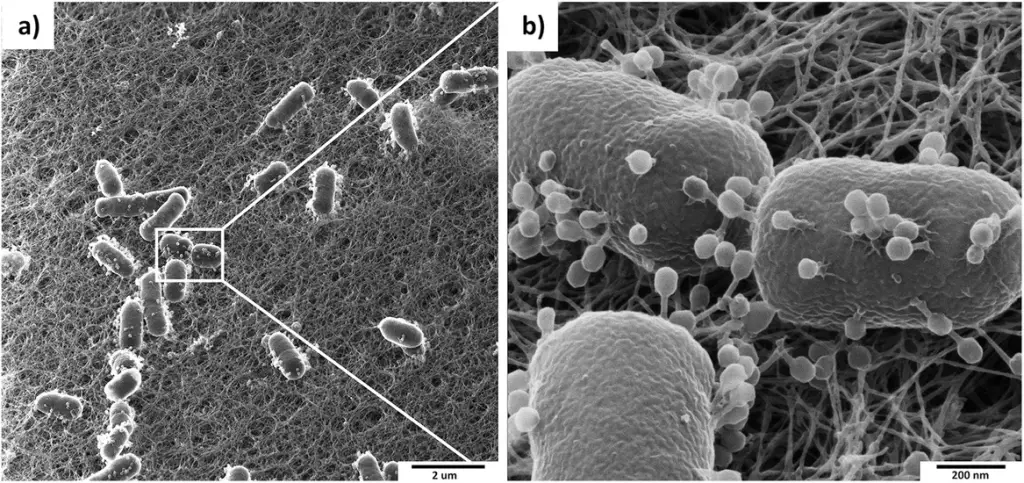How do phages adsorb to bacteria?
Did you know that phage adsorption to bacterial cells involves Brownian motion?
If no, then you are just a second to the answer.
Bacteriophages are viruses that infect bacterial cells as their hosts in a highly efficient manner that makes them an antibiotic alternative. A successful phage infection involves several stages, with adsorption being the first step, and thus its understanding is fundamental in exploring the mechanisms of eating up bacteria. This represents the initial point of contact between virus and host and is vital in host range specificity determination.
 |
| A bacteriophage attaches to a bacteria. Photo by Tyler J. Ford |
What is bacteriophage adsorption?
Bacteriophage adsorption refers to phage adhesion (attachment) to a bacterial cell. This process occurs naturally, although scientists have also tried to modify it to fit their needs. This article will enlighten on how it happens naturally.
How does phage adsorption happen
There are mainly three steps involved in phage adsorption: initial contact, reversible binding, and irreversible attachment. Initial contact involves random collisions between the phage and host, usually brought about by Brownian motion, flow, dispersion, or diffusion. Garen and Puck (1951) discovered that Reversible binding involved binding and detachment from the cells and was shown to keep the phage close to the bacterial cell surface as it searches for the specific receptor that can enable irreversible attachment. Reversible binding is sometimes mediated by an enzymatic cleavage which allows for conformational rearrangements in the phage molecules resulting in the release of the genetic material into the host.
What happens during phage binding to the bacteria?
During adsorption, phages target many receptors found on bacteria’s cell walls, from peptide sequences to polysaccharide moieties, slime, biofilms, capsules, pili, and flagella. Due to a wide range of receptors, phages end up adsorbing to more than one site. Sometimes, the receptors involved in reversible binding are not engaged in irreversible binding. The two receptor mechanism is beneficial because it increases the stability and probability of finding receptors for irreversible binding in phages. Different receptors are involved in phage adsorption because of the difference in cell wall composition in the Gram-positive and Gram-negative bacteria.
In Gram-positive bacteria, the receptors involved are usually teichoic acid, peptidoglycans, murein, or their residues. In Gram-negative, the receptors involved are usually; Lipopolysaccharides (Lipid A, the core polysaccharide, O-polysaccharide), pili, flagella, and capsule.


